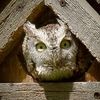Wish I could get Closer to great blue herons
Feb 9, 2012 13:06:06 #
In the forground is the T-Tom Cut from the island to the earth dam is shallow and protected Mussel sholes (the monkey face mussels) in the 18-19 centry used for buttons, beyon the dam is the Grate Blue Heron Rookery. Few Herons have arived but in 2-4 weeks there will be 10 to 15,000 birds. The first picture is D300, 70-200, then went to TC 1.7, then 500mm Mirrow with 2x + TC 1.7 But still need to get closer!!!
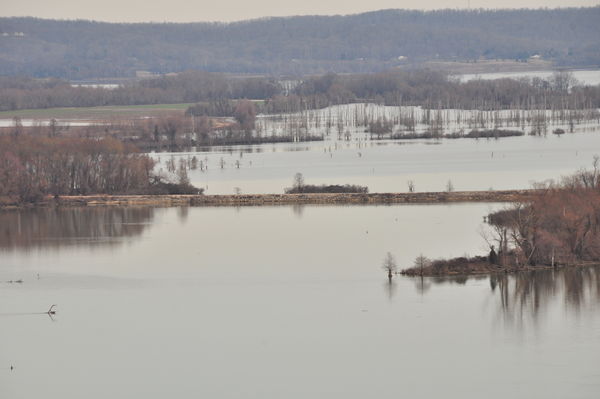
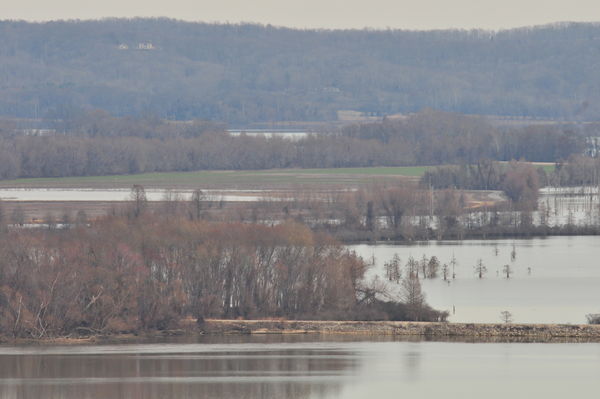

Feb 9, 2012 13:43:40 #
Ray ~ It is my personal belief that just how close one can get to these birds depends on their location. At say, Assateague Island one may get much closer than say some river venue. I have seen them fly, 'on me', when I stopped 1/4 mile away. Other times, it might depend on what they might be engaged in. When in the 'hunting mode', I have been able to get much closer that almost any other time. Then again, maybe not. :) Much of this holds true with Egrets as well.
For examples, I will post a link rather than take up space here. I even found one off the beaten path in the Great Smokies. I love going after these birds, but improving my skills is an ongoing project due to my health.
http://web.me.com/jrweemsjr/J._R._WEEMS_PHOTOGRAPHY/My_Albums/Pages/BIRDS.html
For examples, I will post a link rather than take up space here. I even found one off the beaten path in the Great Smokies. I love going after these birds, but improving my skills is an ongoing project due to my health.
http://web.me.com/jrweemsjr/J._R._WEEMS_PHOTOGRAPHY/My_Albums/Pages/BIRDS.html
Feb 9, 2012 14:09:11 #
I just thank it wouold be so cool to be close to 10-15,000 nesting Grate Blue Herons but on the otherhand the mussel larva need the bird dropings for there start in life, 15,000 birds' dropings could be intence
Feb 9, 2012 18:41:54 #
Ray and JoJo wrote:
I just thank it wouold be so cool to be close to 10-15,000 nesting Grate Blue Herons but on the otherhand the mussel larva need the bird dropings for there start in life, 15,000 birds' dropings could be intence
Sounds intense to me!!!!!!!
I'll keep my distance........
15,000 birds....15,000 bird droppings a day
105,000 droppings a week
420,000 a month
I need to step back a little farther........
Feb 9, 2012 19:34:03 #
The first responsibility of a wildlife photographer is: "Do No Harm." Please don't even try to get close to the rookerie. Disturbing those birds when they are breeding will interfere with their successful hatching and raising of young and it is probably illegal, too. Instead, find a wildlife refuge with marshes and swamps that has a wildlife drive where you can shoot from your car. Don't laugh. The car acts as a blind and the birds who are hunting pay less attention to you than if you are out walking. I regularly shoot at Bombay Hook NWR in Delaware and E B Forsythe NWR in NJ and have gotten some pretty good shots that way. Drive up slowly with your gear ready. Move cautiously and quietly with your camera and you will get the shots that you want.
It may seem like a spectacular sight to see 10-15,000 panicked herons take to the air but is is a disaster for the birds.
The attached photo was taken from my car at Bombay Hook NWR in Smyrna Delaware.
It may seem like a spectacular sight to see 10-15,000 panicked herons take to the air but is is a disaster for the birds.
The attached photo was taken from my car at Bombay Hook NWR in Smyrna Delaware.
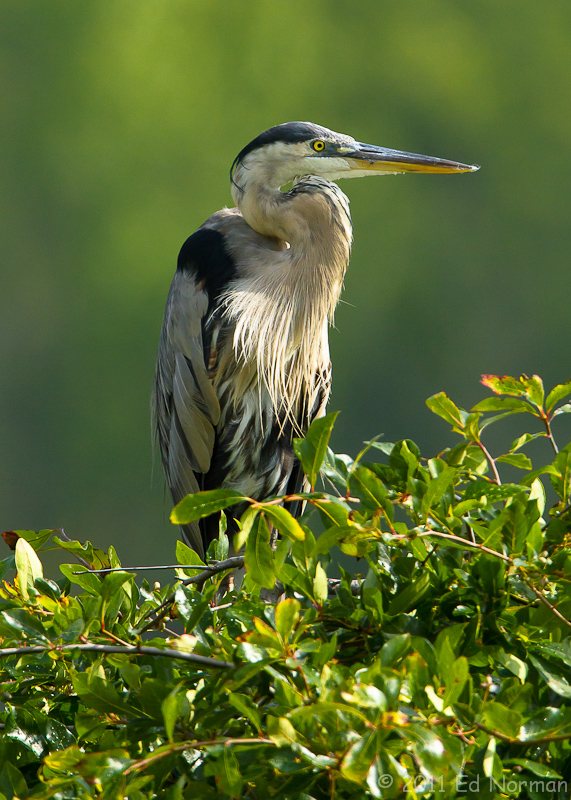
Feb 9, 2012 20:24:37 #
titan1
Loc: SC Lowcountry
It may seem like a spectacular sight to see 10-15,000 panicked herons take to the air but is is a disaster for the birds??????????
Please explain why you think it would be a disaster.
Please explain why you think it would be a disaster.
Feb 9, 2012 20:30:11 #
birdpix wrote:
The first responsibility of a wildlife photographe... (show quote)
Birdpix ~ I MOST concur with the above. I was under the impression he was talking about individual birds. By the way, I have been to 'HOOK" several times. I was able to capture my first Glossy Ibis there. Need to get back. :)
Feb 9, 2012 21:04:16 #
titan1 wrote:
It may seem like a spectacular sight to see 10-15,000 panicked herons take to the air but is is a disaster for the birds??????????
Please explain why you think it would be a disaster.
Please explain why you think it would be a disaster.
When birds are either sitting on eggs or have chicks that need to be kept warm and the adults are flushed those eggs and or chicks become the prime target for predators: crows, gulls, and many of the raptors as well as mamallian predators if the nests are on land areas. If eggs or chicks who haven't achieved the ability to self regulate temperature are left for too long they can die or fail to hatch.
The Great Blue Heron is fairly successful and common BUT a study in Florida bay showed that they were able to raise only 1.46 fledglings per nest attempt. Given that 1st year mortality of Great Blues is 69% you can see that any disturbance during nesting can have a detrimental effect on their success.
Feb 9, 2012 22:03:53 #
titan1
Loc: SC Lowcountry
birdpix wrote:
quote=titan1 It may seem like a spectacular sight... (show quote)
Great info, thanks!!!!
Feb 9, 2012 22:04:09 #
Feb 10, 2012 12:27:12 #
Ray and JoJo wrote:
In the forground is the T-Tom Cut from the island to the earth dam is shallow and protected Mussel sholes (the monkey face mussels) in the 18-19 centry used for buttons, beyon the dam is the Grate Blue Heron Rookery. Few Herons have arived but in 2-4 weeks there will be 10 to 15,000 birds. The first picture is D300, 70-200, then went to TC 1.7, then 500mm Mirrow with 2x + TC 1.7 But still need to get closer!!!
If you want closeups, just put a fish pond in your yard.
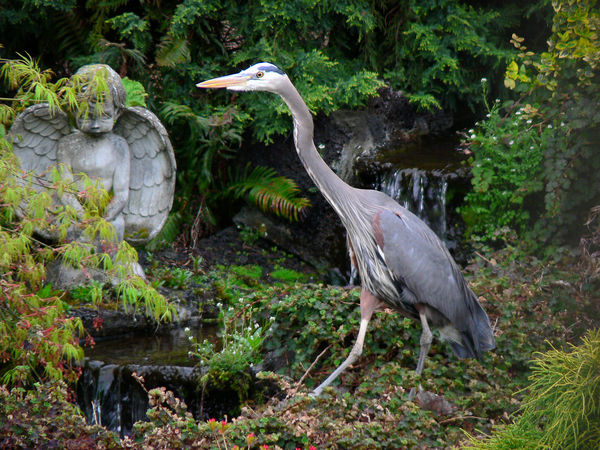
Feb 10, 2012 12:32:08 #
birdpix wrote:
The first responsibility of a wildlife photographe... (show quote)
Stellar, Stellar shot.
Razor sharp, beautiful....bokeh-land...
that is one nice shot.
Feb 10, 2012 12:45:34 #
Ray and Jo jo you don't need to get closer. You just need a different lens. You should get that one that Ian found; a sigma 200-1000 F/2.8 with a converter. That would bring you in nice a close even if they were one or two miles away
Feb 10, 2012 13:04:51 #
Wabbit
Loc: Arizona Desert
tramsey wrote:
Ray and Jo jo you don't need to get closer. You just need a different lens. You should get that one that Ian found; a sigma 200-1000 F/2.8 with a converter. That would bring you in nice a close even if they were one or two miles away
Be prepared
Feb 10, 2012 15:03:54 #
ring
Do you have any idea what that thing is? Is it a real lens or just a prop? Can you imagine hauling that thing up a mountain to get a shot of a mountain goat?
Do you have any idea what that thing is? Is it a real lens or just a prop? Can you imagine hauling that thing up a mountain to get a shot of a mountain goat?
If you want to reply, then register here. Registration is free and your account is created instantly, so you can post right away.



